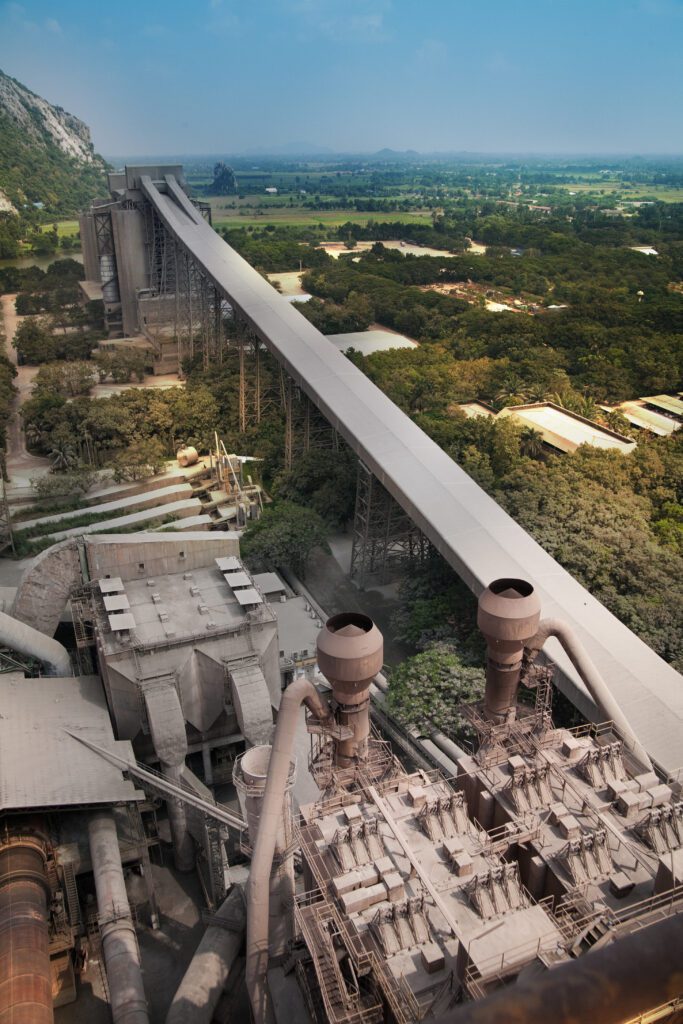As a result of global warming concerns, the pressure from governments, shareholders, customers, supply chain partners, and local communities on global cement manufacturing firms to decarbonize operations is mounting at an accelerating pace. Cement is a critical ingredient that feeds the construction industry across the globe. However, cement production is a significant source of greenhouse gas (GHG) emissions – with up to 622 kg of CO2 emitted for each ton of cement produced and the average cement plant producing approximately 3.5 billion tons of cement annually. According to the Imperial College of London, the cement industry contributes seven percent of global human activity-related CO2 emissions. These numbers must drastically decrease if sustainable cement processing and production are to be achieved.

At the same time, the cement industry is facing disruption brought about by the need to digitize operations in order to remain competitive. Inaction could mean being left behind. The disparity between digital age winners and losers has become even more obvious during the COVID-19 pandemic. Companies that have invested in digitization are emerging as nimble and agile as they quickly adapt their processes to marketplace changes while organizations attempting to maintain “business as usual” are rapidly losing market share.
Given these challenges, how can the cement industry decarbonize operations while preserving shareholder value?
Business as usual will not address these issues. Leading manufacturers now must embrace digital services and smart cement plant approaches that make a difference. Fortunately, new digitized electrification and processing efficiency technologies are emerging that enable the deployment of smart cement plants that drastically reduce CO2 emissions.
Smart cement plant benefits include higher uptime and lower support costs
Within the cement industry, the promise of digitization is being realized in several important areas. One of those areas is the deployment of predictive or condition-based maintenance services programs to drastically reduce infrastructure equipment-related downtime costs. These services offer real-time remote monitoring of equipment, predictive analytics that provide early detection of any behavioral anomalies, and easy access to specialized experts who can quickly advise on recommended actions.
In a predictive maintenance model, maintenance work is scheduled based on data-driven diagnostic evaluations that determine when to perform service. The monitoring of equipment condition provides trending data to help anticipate future maintenance needs.
In the area of electrical systems maintenance, for example, business owners avoid having to rip and replace existing electrical infrastructure to enjoy digitization benefits. Simply equipping transformers and switchgear with sensors opens the door to equipment performance data acquisition. That data can then quickly, and easily be analyzed in the cloud to identify early signs of either imminent or longer-term equipment failure. Once issues are identified, alerts are automatically generated so that any needed inspections, repairs, or replacements are scheduled before any unanticipated system failures. The real-time data is presented in easy-to-interpret dashboards that indicate the latest status on key operational parameters such as condition, performance, and energy consumption.
Modern services drive sustainability levels
Such actions address sustainability issues on multiple levels. Through better maintenance of equipment, machines and infrastructure will run more efficiently, thereby consuming less energy and reducing carbon emissions. Equipment assets will also experience a longer lifecycle which, on a macro level, will help to conserve raw materials by avoiding the need for more frequent production of new equipment to replace old.
Companies like Schneider Electric are well-positioned to support heavy industries like cement during their transition to high-efficiency smart plant infrastructures. Service offerings such as “EcoStruxure™ Service Plan,” which is built on Schneider Electric’s EcoStruxure IoT platform, are powered by the EcoStruxure Asset Advisor and Power Advisor software. These solutions facilitate the data acquisition and analysis phases of a predictive maintenance program. The EcoStruxure Service Plan also provides access to Schneider Electric remote experts who staff the Connected Service Hub. These experts issue recommendations for correcting abnormal variations and can also address high-priority alerts. Optional field service experts are also able to perform on-site maintenance activities when required.
For more information
To learn more about how modern digitization services can help drive safer and more sustainable operations, download the new Reuters and Schneider Electric white paper “Services in the Age of the IoT”.




